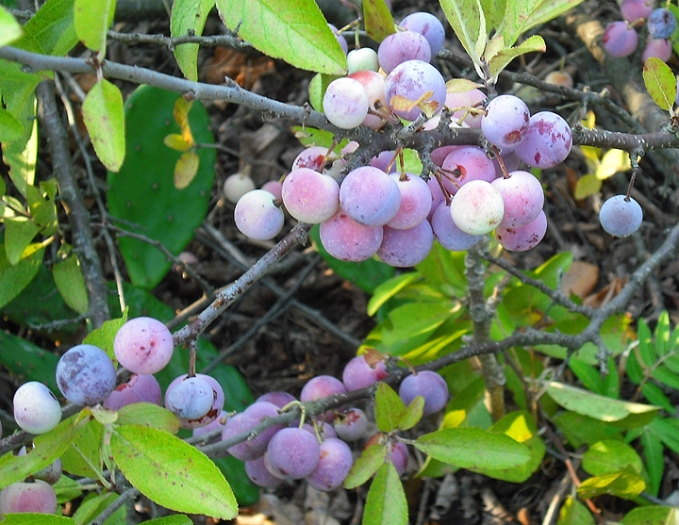Beach Plum
(Prunus maritima)
Beach Plum (Prunus maritima)
/
/

Aznaturalist
CC BY-SA 3.0





























































Estimated Native Range
Summary
Beach Plum is valued for its hardiness, salt tolerance, and ability to thrive in poor, sandy soils, making it an excellent choice for coastal restoration and erosion control projects. It is also used ornamentally in gardens for its attractive spring flowers and colorful fruit. The plant requires full sun for optimal fruiting and prefers well-drained soils. It is drought-tolerant once established and has a moderate growth rate. Beach Plum can spread by suckers, forming thickets, which can be managed by pruning. It is susceptible to fungal diseases such as black knot. The fruit is harvested for making jam and jelly, and the plant has historical significance in regional cuisine.CC BY-SA 4.0
Plant Description
- Plant Type: Shrub
- Height: 3-6 feet
- Width: 3-6 feet
- Growth Rate: Moderate
- Flower Color: White
- Flowering Season: Spring
- Leaf Retention: Deciduous
Growth Requirements
- Sun: Full Sun
- Water: Medium
- Drainage: Fast, Medium
Common Uses
Bee Garden, Bird Garden, Butterfly Garden, Edible*Disclaimer: Easyscape's listed plant edibility is for informational use. Always verify the safety and proper identification of any plant before consumption., Erosion Control, Fragrant, Groundcover, Low Maintenance, Rabbit Resistant, Salt Tolerant, Showy Flowers, Street Planting
Natural Habitat
Coastal sand dunes and beachfronts, maritime shrublands, and coastal grasslands
Other Names
Common Names: Strandpflaume
Scientific Names: Prunus maritima , Prunus maritima var. maritima , Prunus pubescens , Prunus pygmaea , Prunus sphaerica , Prunus littoralis , Cerasus pygmaea , Prunus lancifolia , Prunus maritima f. flava , Prunus pubigera
GBIF Accepted Name: Prunus maritima Marshall